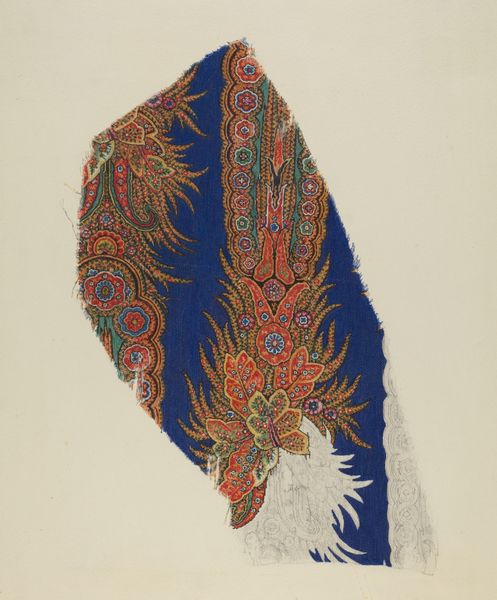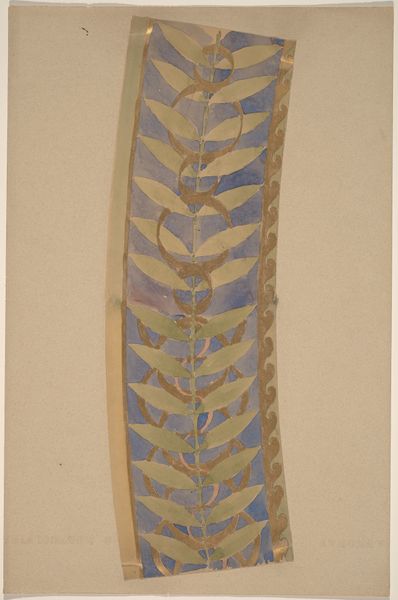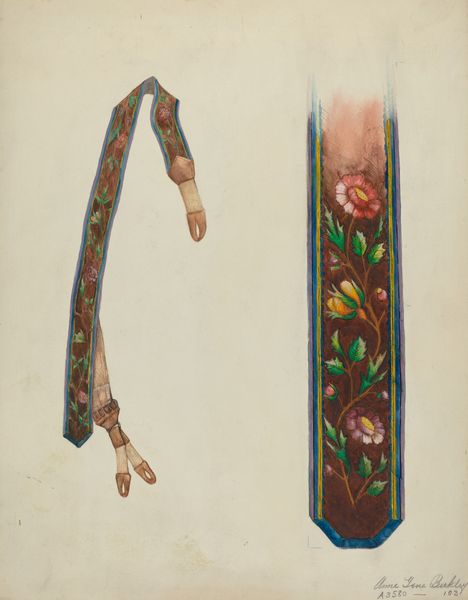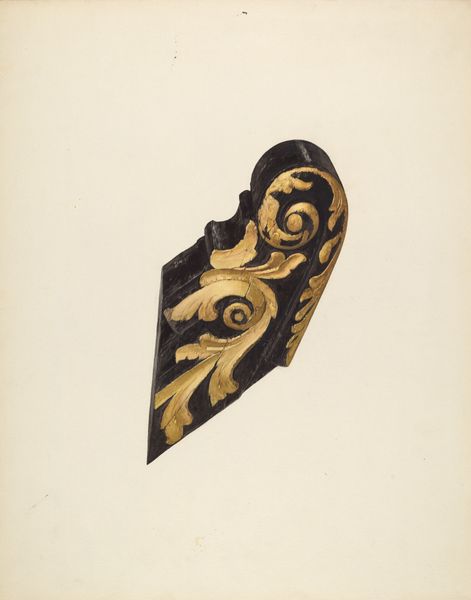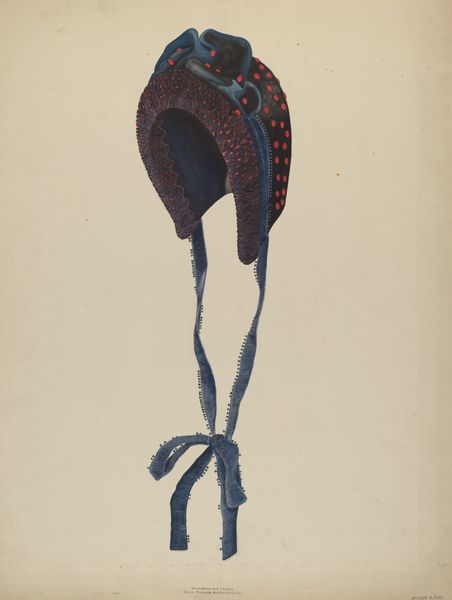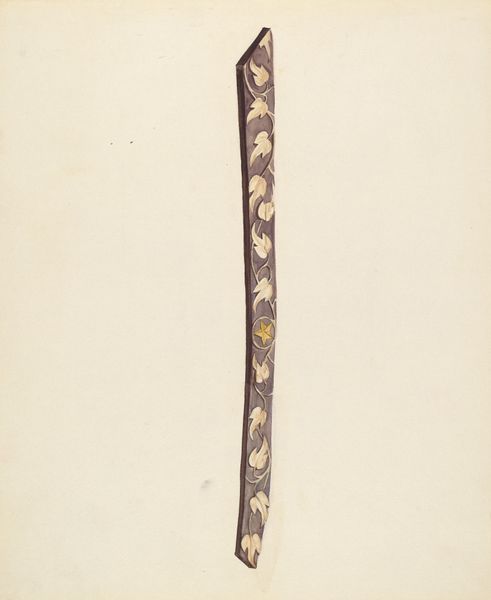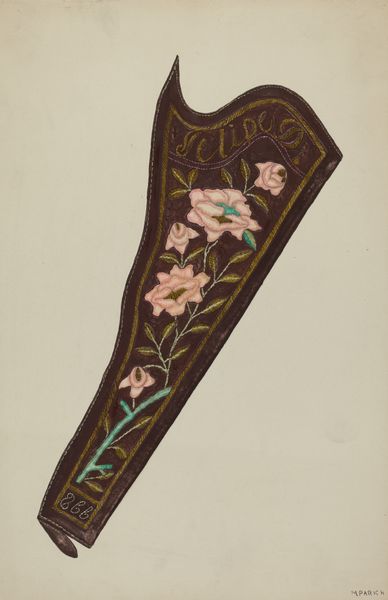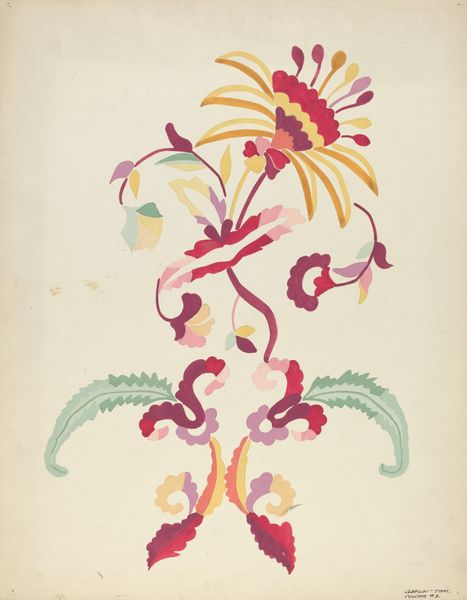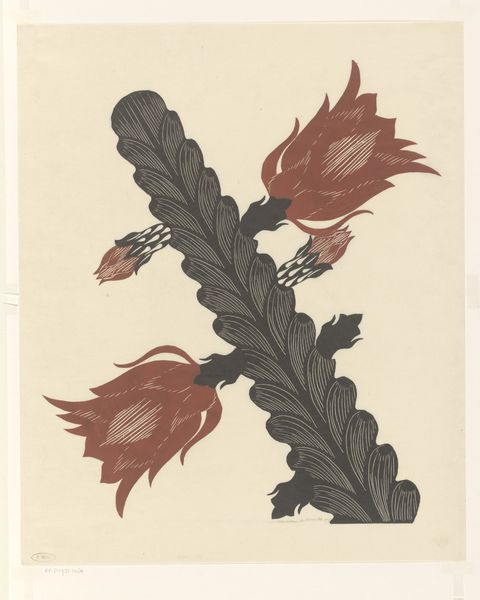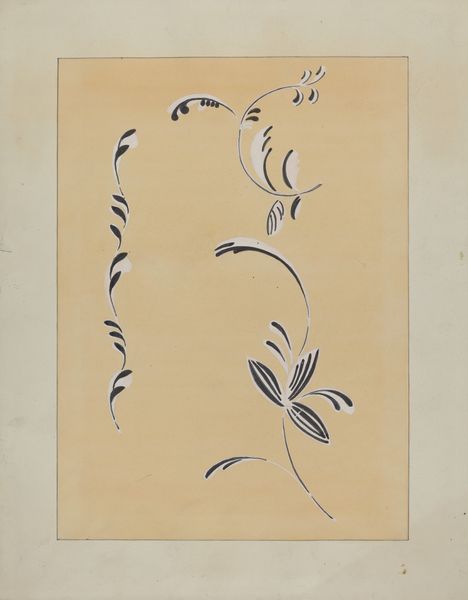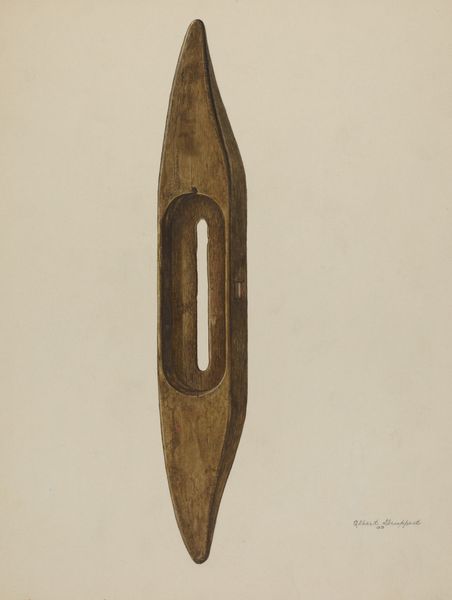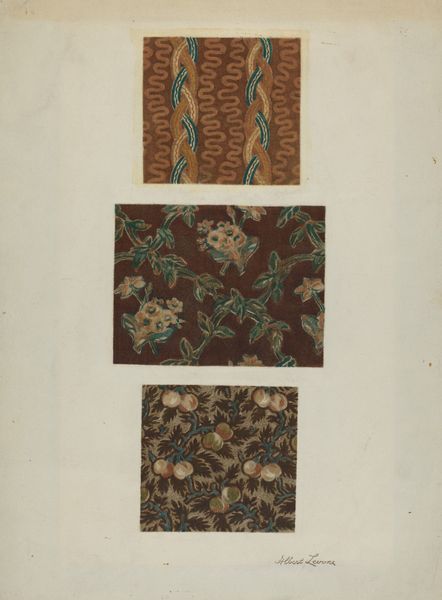
drawing, coloured-pencil
#
pencil drawn
#
drawing
#
coloured-pencil
#
pencil drawing
#
coloured pencil
Dimensions: overall: 38.1 x 26 cm (15 x 10 1/4 in.) Original IAD Object: 28" long
Copyright: National Gallery of Art: CC0 1.0
Editor: So, this is Lucille Chabot's "Bow Piece of a Ship," a coloured pencil drawing from around 1936. I find its curved form and muted colours rather striking, a delicate fragment. What historical perspectives does this evoke for you? Curator: Considering Chabot's drawing through the lens of 1930s America, particularly during the Great Depression, the image resonates with both nostalgia and the practical realities of maritime labor. The intricate detail suggests a longing for craftsmanship and a connection to a pre-industrial past, wouldn't you agree? Yet, ships at this time also represented crucial infrastructure for trade and potential escape from economic hardship. What do you think about the symbolic value of the oak leaves depicted here? Editor: I hadn't considered the escape aspect, that’s really fascinating. Oak leaves, I guess, usually stand for strength, resilience. Does that tie into ideas of masculine power connected to sailing? Curator: Precisely. Think about the historical associations of ships – they are frequently linked with male-dominated narratives of exploration, colonization, and warfare. Consider, however, Chabot’s perspective as a female artist. Does her drawing reinforce or challenge these traditional power structures? The decorative aspect of the bow piece, perhaps, feminizes it, reclaims a space dominated by men through design? Editor: That's a thought-provoking point. The ornamental nature almost subverts the aggressive associations you were mentioning, reframing the narrative. Curator: Exactly. Perhaps the choice of coloured pencil, traditionally considered a ‘gentler’ medium, further underscores a softer interpretation of maritime history, subtly critiquing its more dominant, masculine readings. What are your thoughts on how artists challenge power dynamics through subtle details? Editor: I've always approached drawings like this solely on visual composition. But contextualizing art to better comprehend an artist's message allows for a much deeper understanding. Curator: Agreed. Analyzing art through different lenses is imperative in order to expand on dialogues, challenge assumptions, and find the truth.
Comments
No comments
Be the first to comment and join the conversation on the ultimate creative platform.
